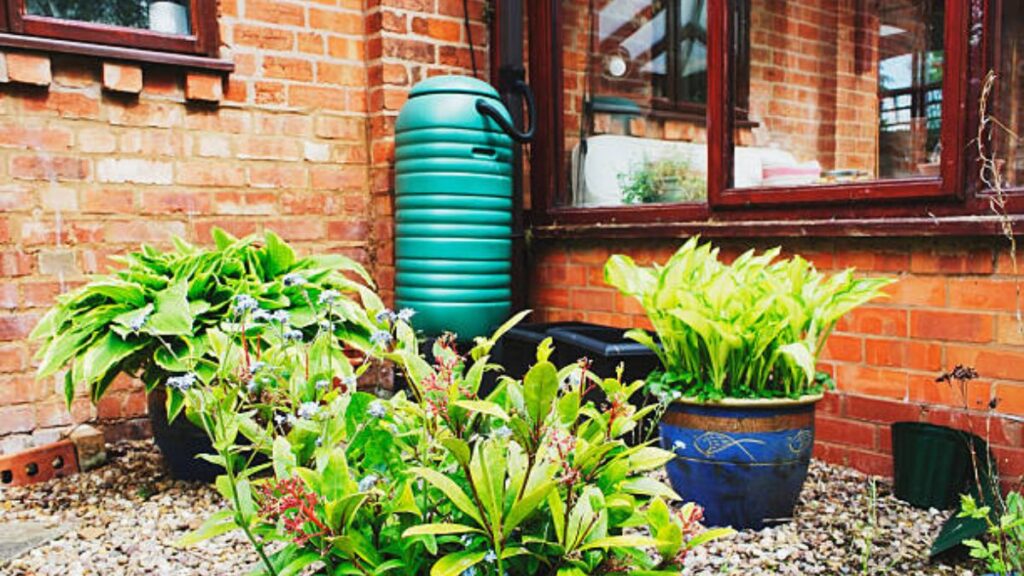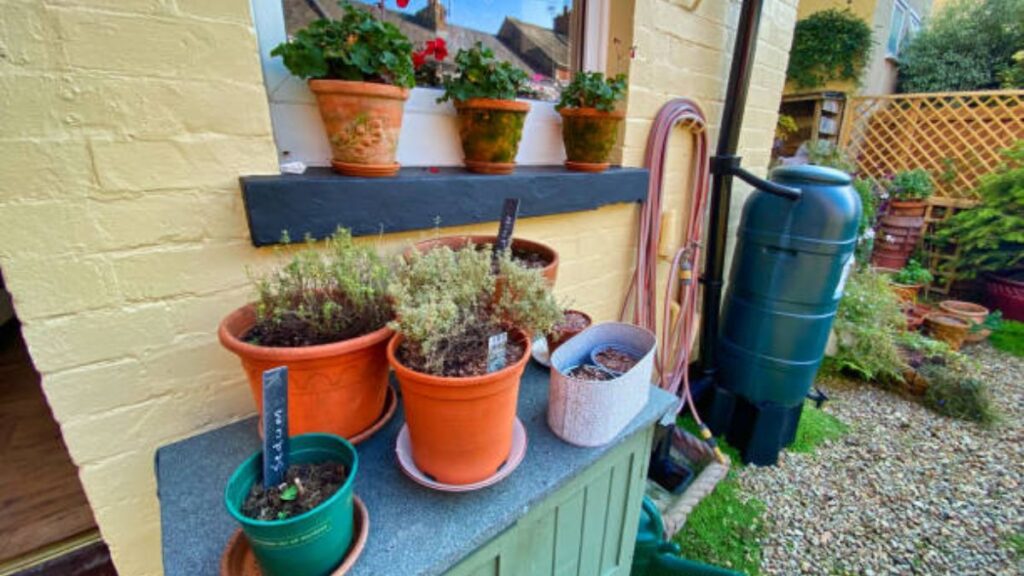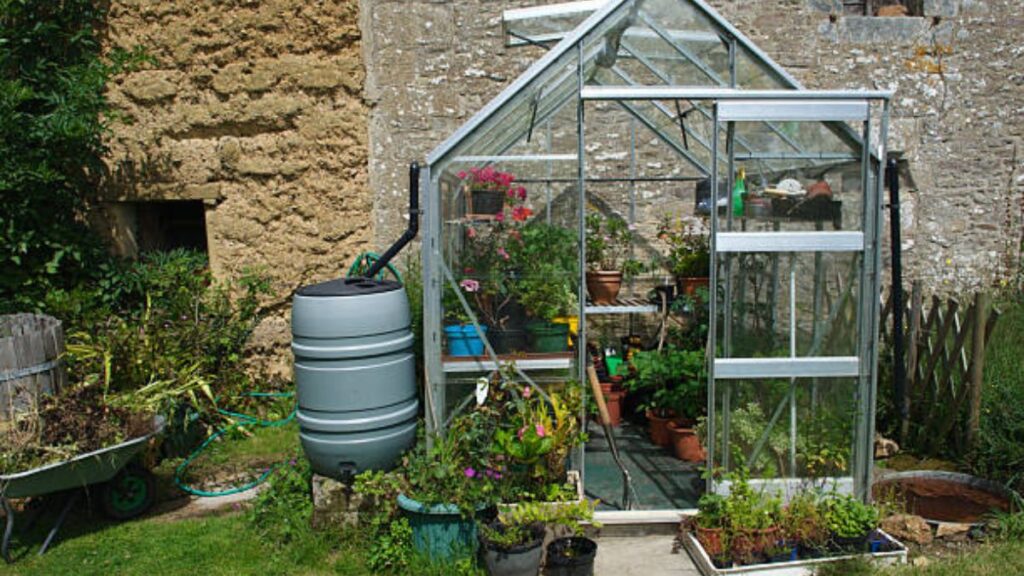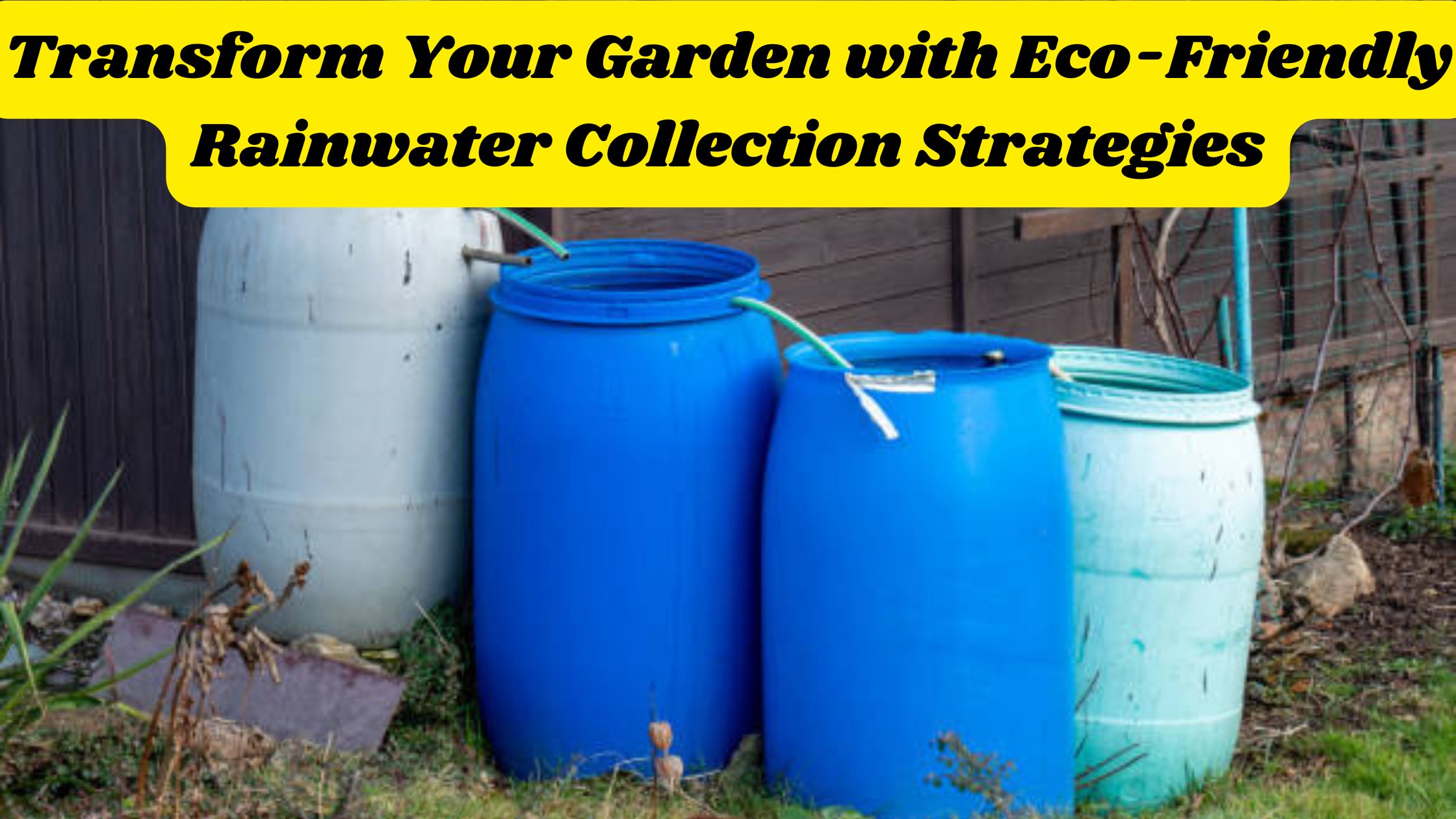Introduction
Transform Your Garden with Eco-Friendly Rainwater Collection Strategies

In the realm of gardening, water holds paramount importance. However, with growing concerns regarding water conservation and sustainability, exploring eco-friendly methods to nurture plants becomes imperative. Rainwater collection emerges as a brilliant and sustainable strategy that not only enhances your garden’s beauty but also reduces your ecological footprint. In this article, we will delve into effective rainwater collection techniques that can transform your garden into a verdant sanctuary while preserving our precious water resources..
Eco-Friendly Rainwater Collection and Storage Techniques
Conserving water, reducing reliance on municipal supplies, and promoting sustainable gardening practices can be achieved through the collection and storage of rainwater in environmentally friendly ways. Here are some effective methods:
1. Rain Barrels
- Description: These large containers placed under downspouts collect rainwater from your roof.
- Eco-Friendly Tips:
- Use recycled or repurposed barrels to minimize environmental impact.
- Install a mesh screen for debris filtration and mosquito breeding prevention.
- Attach an overflow hose to direct excess water away from your home’s foundation, ideally to a garden bed.
2. Rain Chains
- Description: Decorative alternatives to downspouts, guiding rainwater from the roof to a storage container or garden area.
- Eco-Friendly Tips:
- Opt for rain chains made from recycled or sustainable materials like copper or aluminum.
- Place rain chains to direct water into a rain barrel or directly into a rain garden.
3. Rain Gardens
- Description: Planted depressions that collect rainwater runoff from impervious surfaces like roofs, driveways, and patios.
- Eco-Friendly Tips:
- Use native, drought-tolerant plants that thrive with minimal watering and help filter pollutants.
- Amend the soil with compost to improve permeability and allow water absorption.
4. Underground Cisterns
- Description: Large tanks buried beneath the ground to store significant amounts of rainwater.
- Eco-Friendly Tips:
- Choose cisterns made from eco-friendly materials like recycled plastic or reinforced concrete.
- Use solar-powered or manual pumps to distribute stored water to your garden.
5. Rainwater Harvesting Systems
- Description: Typically involve a combination of gutters, downspouts, filters, and storage tanks for rainwater collection and storage.
- Eco-Friendly Tips:
- Install gutter guards to keep debris out of gutters for cleaner water collection.
- Add a first-flush diverter to remove initial, more contaminated runoff.
- Use low-impact, recycled, or locally sourced materials during system installation.
6. Green Roofs
- Description: A vegetative layer grown on a rooftop, absorbing rainwater and reducing runoff.
- Eco-Friendly Tips:
- Plant drought-resistant, native species to reduce maintenance and irrigation needs.
- Integrate a rainwater collection system beneath the green roof to capture excess runoff for garden use.
7. Permeable Paving
- Description: This allows rainwater to seep through the surface and be absorbed into the ground or directed into a storage system.
- Eco-Friendly Tips:
- Use permeable materials like gravel, porous concrete, or recycled pavers.
- Connect the permeable paving system to a rain garden or storage tank to maximize water collection.
8. Dry Wells
- Description: Underground structures that collect and slowly disperse stormwater runoff into the ground.
- Eco-Friendly Tips:
- Construct dry wells using sustainable or recycled materials.
- Place dry wells in areas where they can recharge groundwater and reduce surface runoff.
9. Water Butts
- Description: Similar to rain barrels but smaller and more decorative, making them ideal for urban or small garden settings.
- Eco-Friendly Tips:
- Choose space-saving, eco-friendly models that fit into smaller spaces while offering efficient water collection.
10. Greywater Systems
- Description: Recycle water from household activities (like washing dishes or laundry) and can supplement rainwater use in the garden.
- Eco-Friendly Tips:
- Use biodegradable, plant-safe soaps and detergents to ensure the greywater is safe for garden use.
By incorporating these eco-friendly methods, you can efficiently collect and store rainwater, helping to conserve water and support sustainable gardening practices.
Explore the Advantages and Techniques of Incorporating Eco-Friendly Rainwater into Your Gardening Practices
Eco-Friendly Rainwater Collection and Gardening Practices

Incorporating eco-friendly rainwater collection methods into your gardening routine can conserve water and promote sustainable practices. Here’s an overview of the key benefits and tips to get started:
Benefits of Using Rainwater in Gardening:
- Cost Savings: Reduce your water bills by collecting and using rainwater, especially during dry seasons.
- Healthier Plants: Rainwater is chemical-free and nutrient-rich, fostering healthier plant growth.
- Sustainability: Reduce the demand on municipal water supplies and minimize environmental impact.
- Soil Improvement: Rainwater’s neutral to slightly acidic pH maintains soil health and texture.
Tips for Using Rainwater in Gardening:
- Install a Rainwater Harvesting System: Set up rain barrels under downspouts or consider underground cisterns for larger gardens.
- Optimize Water Distribution: Use drip irrigation or soaker hoses to deliver water directly to the roots.
- Water Timing: Water your plants in the early morning and check weather forecasts to avoid over-watering.
- Maintain Your Rainwater Collection System: Regularly clean gutters, rain barrels, and inspect for leaks.
Eco-Friendly Tips for Rainwater Collection:
- Compact Design: Opt for space-saving models that fit smaller spaces while offering efficient water collection.
- Greywater Systems: Recycle water from household activities and supplement rainwater use in the garden. Use biodegradable soaps and detergents to ensure safe greywater usage.
By implementing these eco-friendly methods, you can efficiently collect and store rainwater, contributing to water conservation and sustainable gardening practices.
Which is better for plants: rainwater or tap water?

- Connect IP irrigation systems to your rainwater storage for direct root delivery, reducing evaporation and waste.
- Use soaker hoses along garden beds for slow water release, promoting deep soil penetration..
- Implement water timing strategies:
- Water early in the morning to reduce evaporation and ensure more water reaches the roots.
- Check weather forecasts, and skip watering if rain is predicted to prevent over-saturation.
- Maintain your rainwater collection system:
- Clean gutters and rain barrels regularly to prevent blockages and contamination.
- Inspect the system for leaks or damage to maximize efficiency.
- Use mulch to retain soil moisture:
- Apply a layer of mulch around your plants to reduce watering frequency and enhance the benefits of rainwater.
Additional eco-friendly practices to consider:
- Composting: Use rainwater to keep your compost pile moist, aiding decomposition and creating nutrient-rich compost for your garden.
- Rain Gardens: Create a rain garden in a low-lying area of your yard to capture runoff and establish a vibrant, eco-friendly garden space.
By incorporating rainwater into your gardening routine, you can save money and contribute to a healthier and more sustainable garden environment.
Conclusion
Unleash the potential of your garden and create an eco-friendly oasis by adopting sustainable rainwater collection strategies. These methods not only help conserve water and minimize your environmental impact but also contribute to a healthier and more resilient garden ecosystem. Start implementing these practices today and witness your garden flourish with the power of nature’s own resource—rainwater. Embrace these eco-conscious solutions and transform your garden into a thriving haven that thrives on natural resources.
References
- EPA: Provides information on rainwater harvesting in residential settings.
- Brad Lancaster: Offers guides and resources on creating sustainable rainwater harvesting systems.
- RHS: Provides guidance on designing and maintaining rain gardens.
- University of California Agriculture: Explains the importance of mulching for water conservation.
- The Water Project: Discusses the advantages of permeable paving for sustainable water management.
- Gardeners’ World: Offers a guide on setting up drip irrigation systems.
- National Geographic: Explores various water conservation strategies, including rainwater harvesting.
